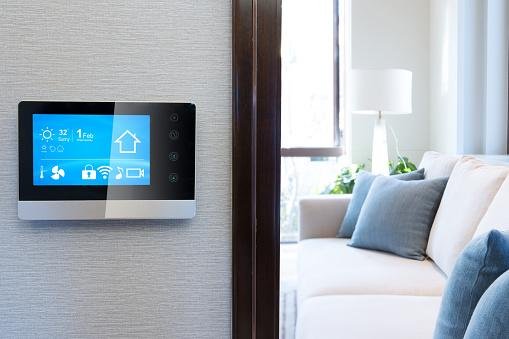Temperature control can be a tricky issue in a rental apartment. Landlords looking to protect their rental property and lower expenses might want to exercise more control over utilities. On the other hand, renters also have a right to live comfortably in their homes. Ideally, that includes having sufficient heating or cooling of their unit.
Thus, finding the perfect setting for both parties can be tricky. In this article, we’ll dissect the question, ‘can landlords control a tenant’s thermostat?’ Also, find the best way to accommodate temperature adjustments in your rental apartment. Let’s get started:
Table of Contents
Can Landlords Control a Tenant’s Thermostat?
Before going into details, we must address the main subject. Can landlords control a tenant’s thermostat? The short answer is yes. Under housing policies in most states, property owners have the right to control the thermostat settings on their rental property. However, jurisdictions that experience frequent temperature changes, such as Arizona, are often exempt from these policies. Instead, the state usually mandates that the landlord hand over control to the tenants or a present building manager.
While landlords rarely exercise such rights in single-family units, it is more common in multi-apartment complexes. After all, it could cause tenant disputes if everyone can tinker with the temperature settings. However, landlords and renters can still significantly disagree on what each party considers a reasonable temperature as seasons change. Bay Property Management Group can proactively address landlord-tenant issues and help you avoid aggravated conflict.
How to Accommodate Temperature Adjustment Request by Lease Amendment
Although landlords have the right to control temperature settings, it’s essential to remember that it must be within reason. In other words, you can’t cut heating costs during the winter and risk tenants getting frostbite.
However, since most landlords don’t live on their rental property, renters might have to submit a request to change the temperature. For example, if your landlord lives in another state, temperature changes in your region might skip their mind. In such a scenario, you may consult your lease for steps on how to make an adjustment request. In addition, some rental agreements require tenants to send a written notice to the property manager, while others are much more informal. Either way, it would be better and faster to follow protocol.
Although, once renters send a request for temperature adjustments, it then falls on the landlord to do everything they can to make the settings more amenable. If a property owner fails to act promptly, that will violate their implied habitability warranty. Thus, renters can sue them for damages or injury due to excessive heat or cold.
Best Practices for Landlords while Controlling the Thermostat
1. Include Relevant Information about the System in the Lease
As the landlord of a condo, or any other multi-unit living arrangement, you should prioritize including relevant information about the thermostat system in your lease. That should consist of policies on how to ask for adjustments and guidelines on the thermostat itself. You can also have what temperature ranges tenants should expect.

2. Use a Smart Thermostat
Another solution to navigate the complex situation is a smart home upgrade. A smart thermostat would eliminate the need for tenants to submit an adjustment request and wait for a reply from their property owner. Since a smart thermostat can automatically adjust the temperature, it can maintain a constant ambiance on the property. In the long run, it could even save you money on heating and cooling.
3. Prioritize Communication
One of the best ways to keep your tenants happy is to prioritize communication. You should set up an easy-to-reach channel accessible to your renters at all times. For example, if there’s a problem with the thermostat, alert all the residents with the assurance that you’ll fix the issue soon. Also, if there’s going to be some inconvenience due to maintenance or repair work, you should also inform them promptly.
4. Keep the System Working
As a landlord, it’s your responsibility to ensure your property is always habitable. That means keeping the temperature system working 24/7. If there’s a fault with your thermostat, you should consider that an emergency. Thus, it would be best to resolve the issue within 24 hours.
Conclusion
Managing a rental property, especially one with multiple units, can be challenging. However, prioritizing your tenant’s comfort over cost would be in your best interest as a landlord. A happy tenant is a paying tenant, which can be more financially beneficial than a few more dollars on heating. Also, it would be worthwhile to remember that you could be liable for injuries caused by extreme temperatures on your property. Therefore, renters should also consider the correct procedure to ask for temperature adjustment. You can easily find this information in your lease.
For landlords that need further guidance on temperature adjustments, it would be best to consult an expert on property management. A property management company can provide the right professionals to advise you and help you avoid legal pitfalls during summer or winter.





